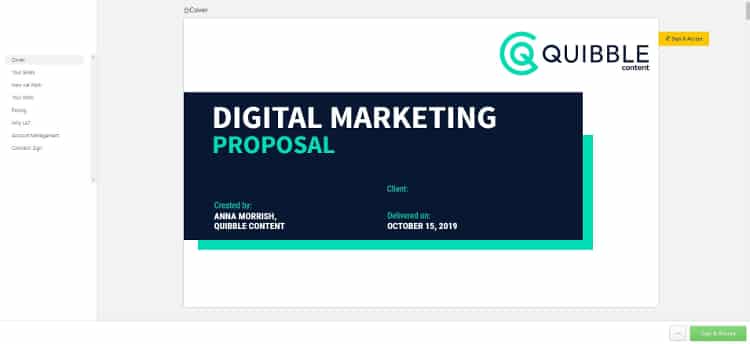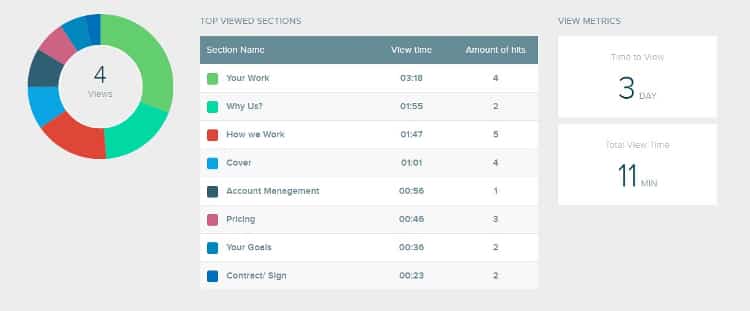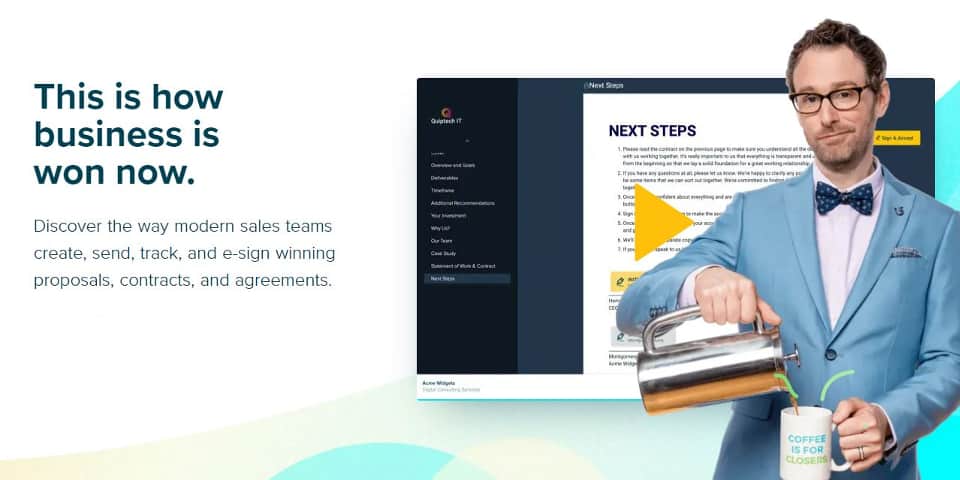Most businesses will understand the importance of submitting proposals to prospective customers. But, is it possible for a proposal be used to identify buying patterns and predict when you’re likely to make a sale? What’s more, is it possible to analyse your proposals to harness data that can identify customer satisfaction indicators?
In short, the answer is yes. In the following article, we look at the development of proposals and explain how we, at Quibble Content, use them as part of our customer communications and retention strategy by predicting customer behaviour.
It doesn’t have to be down to chance
A prediction is officially defined as “a statement about what you think will happen in the future” according to the Cambridge Dictionary. But a prediction doesn’t have to be left down to chance, you can influence potential customers and guide them into buying your products or services by using persuasive, but clear writing techniques and creative thinking. As explained in the Proposify “State of Proposals 2019” – Analysis and insight from more than 1.6 million proposals, it’s important to “…be clear about how you solve your lead’s pain, why they should choose your company over the competition, and consistently prove and defend those points throughout.” As such, it’s imperative to have a defined layout to your proposal as it’ll provide a clear path for your leads to resolve any issues they may have and help them put their trust in you.
You can increase your close rate by a further 23% by adding images, which breaks up your written content and makes it more colourful and engaging. It’s a simple change that can make a huge difference. Another great tip is to ensure your proposals have e-signatures as they’re 3.4 times more likely to close than those without, what’s more deals that allow a customer to sign online close 32% quicker. Once they’re ready to send, be aware that most winning proposals are closed within 48hours, with those sent between Monday and Thursday experiencing the highest success rates.
Identifying buying signals
Does how long someone has interacted with a proposal indicate they’re willing to buy? If they’re investing time reviewing what you’ve put together, we’d like to hope so. But, that’s not all, there are a few elements you should monitor to help you decipher what a client is thinking without directly asking them.
Once you’ve created the most amazing proposal possible, knowing that you’ve included everything required to convert your leads, you can begin to monitor your success rates, including interactions with each proposal.
We use Proposify along with HubSpot, which works perfectly, as we’re able to see not only when someone has viewed the proposal, but when they’ve opened the email, along with how many times they’ve opened it.
By the time you’re already putting together a proposal for a potential customer, you’ve already identified that they’re in a position to make a purchase. The proposal is the final stage of closing a deal, but can we identify if a prospect is serious about making a purchase and whether they’re ready right now?
We know that 50% of proposals sent via Proposify are opened within 80 minutes of sending and that 50% are signed within 24 hours of being opened, however, how do we know the likeliness of someone signing and closing the deal? Are there indicators to watch out for that will tell you one way or another if you’re going to be successful? The answer is yes. Here’s how:
Proposal views
On average, winning proposals are viewed 2.5 times before they’re signed and those viewed 3.5 times didn’t. However, it’s important to understand that every industry is different, as is the information you’ll include within your proposal. We put in a lot of effort into providing potential clients with findings and ways we can resolve issues with their website and marketing activity, along with a section on each service we plan to offer. As such, our view rates are not very “average”. Our successful proposals receive between 4-10 views, whereas our unsuccessful proposals have never received more than three views.
What’s more, our successful contracts close rate varies, with some taking up to a month to close.
Top viewed sections

We’ve constructed our proposals to have the following sections:
- Cover
- Your Goals
- How We Work
- Our Findings
- Your Work
- Pricing
- Why Us?
- Account Management
- Contract/Sign
Proposify allows us to monitor the number of hits on each section, along with the amount of time someone has spent on each section, which ultimately lets us know what they’re most interested in. So, it’s a great idea to break your proposals down for easy monitoring.
Having looked over the proposals we’ve closed, it’s clear to see that those who spend the most time on the “Contract/Sign” section or “Your Work” are much more likely to convert. By knowing this, we’re also able to identify potential clients who may just need a little nurturing to encourage them to sign, especially if they’ve been expressing all the right buying signals.
Negative signals
By going through the process of analysing our successful and unsuccessful proposals we’ve discovered there are also negative indicators we should be aware of and monitor. These include:
- Not viewing all the sections within the proposal
- Viewing the proposal no more than three times
- The “Pricing” section is the most viewed section
By keeping an eye on your proposals, you can see whether a potential client is possibly experiencing some confusion or concerns. You can also weed out any time wasters, along with those who only focus on price and are therefore not necessarily your ideal client as they don’t understand the value you provide. Often an email asking for feedback on the proposal, or a quick call will either nurture the client into making that all-important purchase or rule them out.
Having the ability to monitor this kind of activity is so incredibly valuable as it means you’re not in the dark when you strike up that conversation. You already understand there’s either hesitation or no real interest. So rather than waiting or spending lots of time trying to convince someone that they should sign up, you already have the insights to help you make the decision on which people to focus on.

Proposify as a customer retention tool
Once a proposal has been signed off, we move it away from the main dashboard into our “Won” area. This allows the client to still view the proposal at a later date, should they wish to. One reason this is useful is that it can be used to indicate if a client has a query of some sort. People will often go to the resources available to them to either answer the questions they had themselves or to at least have all the facts in order to ask a valid question. In our experience, an existing client looking at their proposal can mean one of two things:
They’re unsure what services they have access to as part of the agreement – If we see they’re viewing “Your Work” or “Your Goals”, it’s likely they’re reviewing the services we’re offering them. In which case we organise an update call or meeting with the client. This allows us to review any concerns they may have, adjust the marketing plan we have in place to accommodate for changes in their business, and even upsell to them to include other services.
They have concerns – If we see a client viewing the “Contract/Sign” section, this is an indicator that they’re not happy for one reason or another. In some cases, it may mean they’re experiencing financial issues, or they’re looking at hiring someone internally to manage their digital marketing.
In cases such as these, we again organise a catch-up, it may be a call or a meeting, during which we identify the changes in their business and look at ways we can help. This may be through focusing on a particular service to drive sales, offering training, and in some cases, we’ll create a new agreement at a reduced rate. It’s good business, since increasing customer retention rates by 5% increases profits by 25% to 95%, according to research done by Frederick Reichheld of Bain & Company, and it’s also in-line with our values in that we provide value, we want to help businesses grow, which requires us to be flexible with the services we offer.
Analyse, predict and increase sales
Essentially, having the ability to monitor activity surrounding proposals and signed agreements, does allow you to predict customer behaviour. However, it’s important to understand that not everyone will follow the rules. The signals you identify should be used as a guide only, but they do enable you to be more proactive and reactive to close more sales, improve customer service levels and retain more customers.
If you want to know more about how we work, get in touch >

